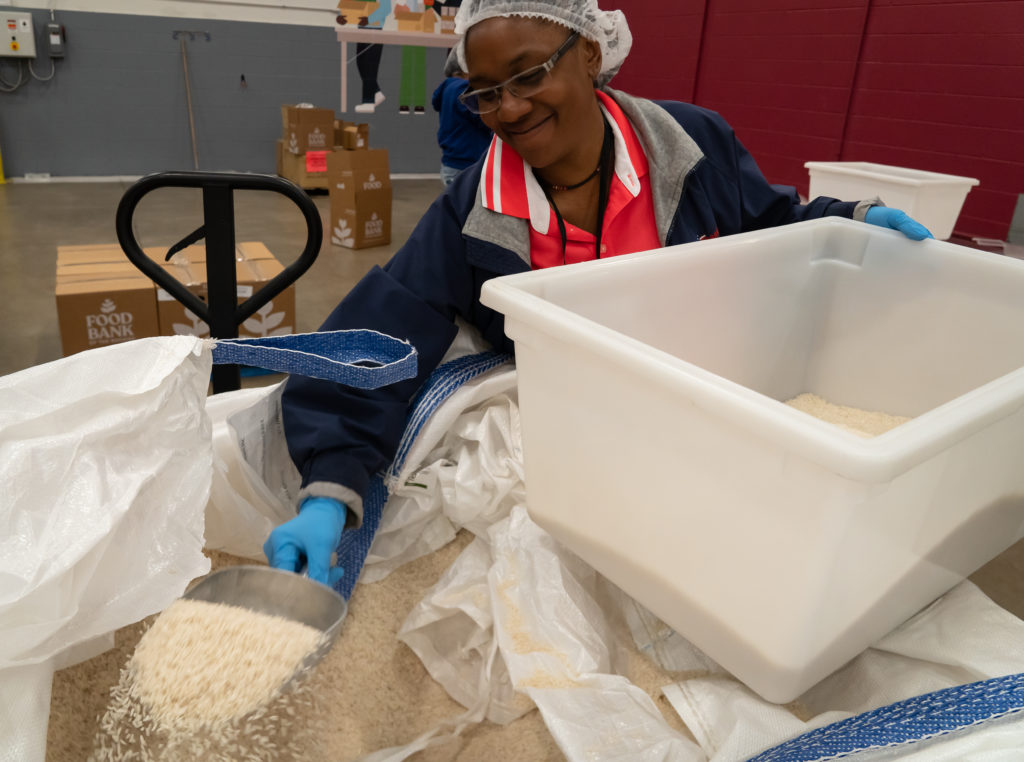On the Monday before Thanksgiving, Thai Nguyen hauled 15 turkeys through a market on Denver’s north side. The founder of the nonprofit Kaizen Food Share was on a last-minute grocery run for her nonprofit’s nutrition program, which planned to deliver holiday fixings to Indigenous elders who had requested turkey dinners.
Kaizen Food Share is part of a network of food distribution programs helping tens of millions of Americans across the country. These programs must stretch even further than in recent years, as the number of people experiencing food insecurity has grown, according to recent federal data. A USDA analysis showed that 44 million people in the U.S. — including 13 million children — had trouble getting enough food in 2022. Overall, the nation’s rise in food insecurity marked a 31 percent increase since 2021, and is the highest it’s been since 2014, the agency said.
This surge in food insecurity comes after pandemic-era federal programs, like the American Rescue Plan’s Child Tax Credit and SNAP emergency allotments, have ended or are scaling back. When inflation soared in 2021-2022, timing could not have been worse for millions of families already grappling with the loss of federal aid on top of rising costs for housing and transportation, said Claire Babineaux-Fontenot, CEO for Feeding America, a national network of more than 200 food banks that serves tens of millions of Americans each year. Even as inflation has eased and unemployment remains at historic lows, she said many households are still struggling to afford food.
READ MORE: Why economists say falling inflation isn’t enough to relieve stress about the U.S. economy
“Hunger is a symptom of poverty. It doesn’t exist in a vacuum,” Babineaux-Fontenot said. “You actually have more people experiencing hunger at higher income rates than before. So it takes more money to get by now than it has.”
Here is some advice from Babineaux-Fontenot and others who work on food insecurity on how you can help food banks and food shares as they serve a growing number of people in need.
Cash stretches farther than cans
Food banks can turn $1 into 10 meals, Babineaux-Fontenot said. That purchasing power speaks to the way food banks have had to adapt, not only to meet the needs of their clients but also to operate.
Volunteering and donating money are “the biggest ways people can support” their local food banks, said Erin Pulling, CEO of Food Bank of the Rockies, the nation’s second-largest food bank.
Food that has been competitively sourced and negotiated now makes up a larger portion of what food banks distribute to clients, and they are having to use those channels more often, Pulling said. Decades ago, she said her organization did not purchase food. Today, the food bank purchases about a third of its food supply.
“The primary cause is due to the increased costs of food. It’s the same struggle that food banks are currently seeing nationwide – dollars simply aren’t stretching as far,” Feeding Colorado, an association of five Feeding America food banks in the state, said in a statement to the PBS NewsHour.
To help narrow that gap, food banks have lobbied Congress to increase funds for The Emergency Food Assistance Program, or TEFAP, in the next Farm bill.
“We can get food for pennies on the dollar in comparison to what you or I can purchase at the grocery store,” Pulling said.

Volunteers pack bags of white rice, which will be distributed to Hunger Relief Partners through Food Bank of the Rockies’ Culturally Responsive Food Initiative. Photo courtesy of Food Bank of the Rockies
If giving to a food drive, pick nutritious foods you would want
Babineaux-Fontenot acknowledged that sometimes people are “more inclined to do a food drive.” In those cases, consider donating “the types of food probably that you want,” she recommended.
When the Food Bank of the Rockies was founded nearly five decades ago, Pulling said the model was to keep food out of landfills, “getting it to food pantries and getting it to people in need. There really wasn’t a focus on nutrition.”
Now, there’s greater demand for nutritious food. In terms of nutritional density, Babineaux-Fontenot said peanut butter “packs quite a punch.” She added that fresh and frozen produce, proteins, dairy products and frozen foods all go a long way to serving people’s needs.
“I do not presuppose that I’m better positioned to make decisions for families experiencing hunger than families experiencing hunger,” she said.
Learn about the specific needs of your community
The refugee-led team at Kaizen Food Share strives to be as culturally responsive as possible to the 1,200 families it serves, Nguyen said. In their intake forms, she said they ask new households, “What types of food would you like us to offer if we have funding available?”
Families enter the program from nearly two dozen countries, including parts of Latin America, Africa and Southeast Asia, Nguyen said, as well as Indigenous communities in and around Denver. The food share works with the Food Bank of the Rockies to try to fulfill requests.
Many of these families are enduring “the most difficult time of their life,” Pulling said. “Showing up with food that’s familiar to them has such power.”
Staff have learned lessons along the way. For example, when serving a primarily Ethiopian client base, Pulling said she learned there is virtually no demand for USDA cheese. For the Afghan refugee community, workers have sought out certain types of rice, beans and tea frequently requested during intake sessions with new families.
“It goes back to providing dignity and reducing shame,” Nguyen said. Building upon that premise, she said the food share instills “solidarity and reciprocity,” in part because many of the workers have lived experience when it comes to insecurity.
“We try to listen to community members and what they want to do,” Nguyen said.
